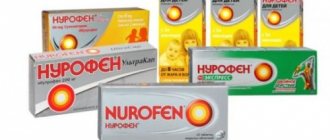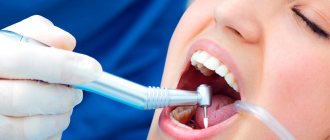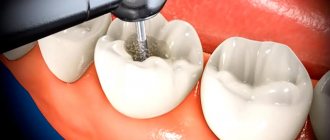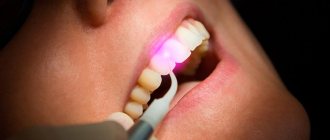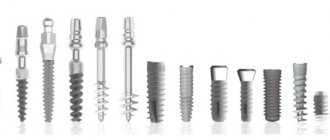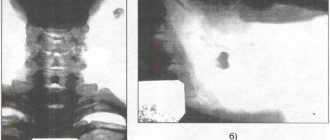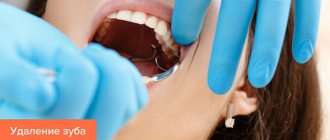After extirpation, experts strongly recommend avoiding food and liquid consumption for 2-3 hours. This is due to the fact that during this period a blood clot is formed, which subsequently prevents the penetration of pathogenic bacteria into the open wound. But many people are still often interested in whether they can drink alcohol after wisdom tooth removal. In their opinion, drinks containing alcohol affect the speedy healing of the gums. Let's figure it out.
Is it possible to drink alcohol after wisdom tooth removal?
Strong drinks, wine, and beer are prohibited after wisdom tooth removal. It should be understood that the proportion of alcohol present in them greatly affects blood circulation. Having ignored this doctor’s recommendation, patients subsequently ask the question: “how to stop bleeding after wisdom tooth removal?” The answer is simple - do not drink alcoholic beverages.
It is important to know that any alcohol greatly thins the blood. It should also be remembered that our liver also reacts quickly. Regardless of the quality of the drinks, she perceives them as poison, trying to get rid of them and neutralize their effects as quickly as possible.
Therefore, if you drink alcohol after wisdom tooth removal, you put a double burden on the body, which can lead to quite serious complications.
How long should you not eat after installing a temporary filling?
The hardening time of the temporary filling material is up to 2 hours. During this time you need to refrain from eating. If anesthesia was used during the procedure, that is, it is possible only after the “freezing” effect wears off. Otherwise, you risk damaging the mucous membrane or biting your tongue.
Dear patients! Temporary filling is an important and very often mandatory stage of treatment. If it is possible to carry out treatment in one appointment, we will certainly do just that. But we ask you to be understanding about the need to install temporary fillings and, more importantly, do not forget to remove them on time and complete the treatment! Unfortunately, often after eliminating pain symptoms and installing a temporary filling, patients “forget” about the need to continue treatment. This only leads to complications of the disease. Take care of your health! And avoid unnecessary spending.
Return to the Dental Treatment page.
After what time is alcohol acceptable?
But when can you drink alcohol after wisdom tooth removal? There is a certain period of restrictions on the consumption of certain alcoholic beverages. Experts recommend sticking to the permitted doses.
- in the first two weeks you should avoid vodka, cognac, brandy, and whiskey. After this time, minimal consumption of drinks is allowed;
- Within 7-15 days, you should also give up low-alcohol drinks (or minimize their consumption). This includes beer, wine, cocktails, champagne.
Now you know when you can drink alcohol when removing a wisdom tooth.
Alcohol and anesthesia
Needless to say, alcoholic drinks have become a part of the lives of many people to a greater or lesser extent.
Drinking alcohol is a serious problem for many, and in this article we will look at the interaction of alcohol and anesthesia in dental treatment.
How does ethyl alcohol affect pain relief?
Dentists may encounter the problem that the patient drank an alcoholic drink before visiting the dental clinic and believes that nothing bad can happen and, naturally, does not inform the attending physician about this. But the use of ethyl alcohol before dental procedures is strictly contraindicated and here’s why:
- No one can guarantee that alcohol and the drug used will not interact in the body. From a medical point of view, ethyl alcohol and the anesthetic used are chemical substances that act on each other and give a general reaction to the body. What the reaction will be is unpredictable. Ethyl alcohol can both neutralize the effect of anesthesia and increase it.
- Of course, drinking alcohol before anesthesia for dental treatment is an excessive load on the liver, since the metabolism and breakdown of ethyl alcohol occurs in this organ, thereby complicating the work of the liver during dental treatment and, of course, after it.
It is worth understanding that after drinking alcohol, you may be denied treatment. This is primarily related to your own safety.
How dangerous is drinking alcohol after dental treatment?
It is clear that the effect of anesthesia will end and its products will leave the body, but many patients are concerned about the question: is it allowed to drink alcoholic beverages after visiting a dental clinic. Much depends on the time that has passed since treatment and on the complexity of the medical intervention. With minimally invasive treatment, such as installing a filling or grinding teeth for orthopedic treatment, the likelihood of negative consequences is not high and will be due to the presence of anesthetic in the patient’s blood. But after surgical interventions, drinking alcohol is under no circumstances recommended; firstly, the effect of the anesthetic after such complex interventions as the installation of implants will be longer, since several other substances are used, and secondly, ethyl alcohol can increase the possibility of bleeding, since it expands blood vessels. Thus, Dr. Grossmann’s dental specialists do not recommend drinking alcoholic beverages for two to three days after treatment to avoid bleeding.
If antibiotics are prescribed after removal
Often the rehabilitation period is accompanied by the use of potent medications. Therefore, you should not only know what not to do after wisdom tooth removal, but also take into account the effects of medications on the body.
If you have been prescribed antibiotics, then alcohol is strictly prohibited. This can cause quite serious consequences. The most “gentle” thing is to neutralize the effect of antibiotics. But it can also:
- blood pressure increases;
- shortness of breath appears;
- heart rhythm goes astray;
- bleeding begins.
The likelihood of cold symptoms appearing is also possible in such cases. If you don’t know what to do if your temperature rises after wisdom tooth removal, then be sure to go to the clinic to see a doctor.
Recommendations for the first hours after installation of the filling [1]
- Do not eat or drink, do not brush your teeth or rinse your mouth for 2 hours after filling.
- If, simultaneously with the installation of the filling, remineralization of the teeth was carried out, for example, the application of fluoride varnish, then it is recommended to refrain from eating, drinking and rinsing for 3 hours.
These are general guidelines and may vary depending on the type of filling materials used. If the doctor gives individual instructions about how long you can eat after filling a tooth, then you should follow them.
The variety of filling materials is associated with various pathological problems and methods for solving them. The choice of which material to fill depends on many factors:
- the reasons that necessitated the installation of the seal;
- location of the area of the tooth for the filling;
- aesthetic needs of the patient;
- technical capabilities of the clinic;
- patient's health status;
- material opportunities.
Based on materials from “Clinical recommendations (treatment protocols) for the diagnosis of dental caries”, developed by the Moscow State Medical and Dental University. A. I. Evdokimov of the Ministry of Health of the Russian Federation and the Central Research Institute of Dentistry and Maxillofacial Surgery of the Ministry of Health of the Russian Federation
If a cement-based filling, as well as a composite or chemical one, is installed, then the tips listed above are relevant. In 2 hours, the material finally hardens and fills the cavities, at the same time the effect of anesthesia ends.
A light or photopolymer filling becomes hard after exposure to a special lamp. Under the influence of light, it hardens, ideally imitating natural tooth tissue, filling cavities and attaching to deeper layers of enamel or dentin. Therefore, theoretically, you can eat and drink immediately after the filling is installed. But it is still better to abstain for a while, while anesthesia is still in effect, inflammation of the gums around the filled tooth persists, and tissue sensitivity is increased.
When can you eat after a temporary tooth filling? A temporary filling for the treatment of caries is placed for a short period of time. Usually, budget materials are used for it, they take a long time to harden, and you cannot eat after such a filling during this entire time, on average - 2-3 hours. After this period, you are allowed to eat, but you must avoid hot, cold, sticky, and hard foods. Otherwise, the fragile material may fall out, and food and bacteria will get into the open cavity of the tooth, which will provoke further infection of the tissues.
Possible complications if you ignore the ban
- The blood layer is washed away, exposing the open wound. This leads to the entry of harmful bacteria and all kinds of infections.
- Heavy bleeding may begin that will be difficult to stop.
- Body temperature rises, general physical weakness is observed.
- Osteomyelitis may develop.
- There is a risk of sepsis (blood poisoning).
If you want to find out how old wisdom teeth grow, whether they should be removed, and what the consequences may be if you ignore the recommendations, then be sure to make an appointment with a dentist.
Why are there any restrictions after installing a filling? [1]
After installing a filling, basic recommendations are given in order to prevent possible negative effects of food or the chewing process on the newly filled tooth. These include advice on whether and when to eat after dental treatment.
- Restrictions on food intake after installation of a filling, directly related to the treatment performed [1]
- When treating teeth, local anesthesia is used, which can reduce sensitivity not only at the site of injection of the anesthetic drug, but throughout the entire oral cavity. As a result, a person incorrectly estimates the size of a piece of food and the degree of grinding. This increases the risk of biting the lips and tongue, trauma to the mucous membranes, breathing problems, and swallowing.
- In the area of manipulation (tooth, periodontium), intervention is performed with instruments. The body’s natural reaction to this is the development of minor inflammation and increased sensitivity, which affect how much you can’t eat after installing a filling: chewing food often leads to discomfort and pain.
- A fresh filling may slightly irritate the soft tissue and nerve inside the tooth. Therefore, if you accidentally press on a newly treated tooth, pain may occur. It can persist for several days, but in the first hours the greatest discomfort is felt.
- While eating, cool air enters the oral cavity. It often causes irritation and increases pain, especially when anesthesia wears off. Such discomfort causes stress, increases irritability and nervousness. Patients try to eliminate discomfort by touching the filled tooth with their tongue, and thereby increase the risk of poor adhesion (attachment) of the filling.
- Related to the characteristics of the material from which the filling is made [1]
Composite materials may change color when exposed to natural and artificial colors in food or beverages. To prevent this from happening, dentists advise avoiding eating brightly colored foods for at least the next two days after installing a light filling. These products include:- berries;
tea;
- coffee;
- carbonated drinks;
- caramel;
- candies in colored glaze, etc.
What to do if pain persists for a long time after a filling is installed? [1]
After installing the filling and the end of the acute period, sensitivity may increase during eating and chewing food within 1-2 weeks. It is recommended to put less stress on the filled tooth and chew on the other side of the jaw. If discomfort persists for more than 14 days, you should contact a dental clinic to identify the cause and obtain advice. If acute pain occurs, without pressure or stress on the treated tooth, then you need to contact the dentist as soon as possible.
Medical expert: Oleg Sergeevich Shchekin
Last updated: July 21, 2021
List of sources
- Clinical recommendations (treatment protocols) for the diagnosis of “dental caries” // https://www.e-stomatology.ru/director/protokols/protokols_30-09-2014/4_karies_8aug2018.doc
Recommendations after the end of the acute period [1]
Hygienic care of teeth with installed fillings is no different from usual. Teeth should be brushed with a toothbrush and suitable toothpaste 2 times a day for 2 minutes. At least once a day, preferably during evening hygiene, it is important to clean the interdental spaces, including on filled teeth, using dental floss or an irrigator. After eating, it is necessary to rinse your mouth and teeth to remove food debris. You can use special mouth rinses. It is not recommended to use homemade decoctions or herbal infusions, as they can stain the filling.
The filling and the tooth underneath can break from nuts, caramel, crackers, dried fruits, dragees, candies, or when biting off large pieces of hard vegetables and fruits. Therefore, such foods should be excluded from the diet, and fruits and vegetables should be eaten in small pieces after the filling is installed.
If, simultaneously with the installation of the filling, remineralization was carried out, for example, fluoridation, then foods with a high level of acidity must be excluded from the diet - freshly squeezed and packaged juices, energy cocktails, wine, strong coffee, carbonated drinks, yoghurts, pineapples, fruit ice cream, lollipops. The acidic environment in the mouth dissolves the applied drug, and tooth protection becomes ineffective.
Once every 6 months it is necessary to visit a dentist for a preventive examination and professional hygienic cleaning. In addition, fillings made of composite material must be polished once every six months to extend their service life.
